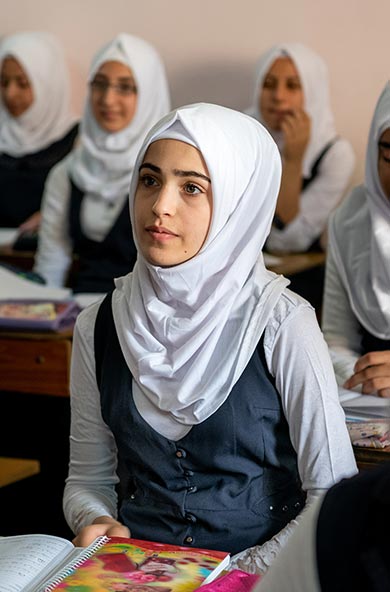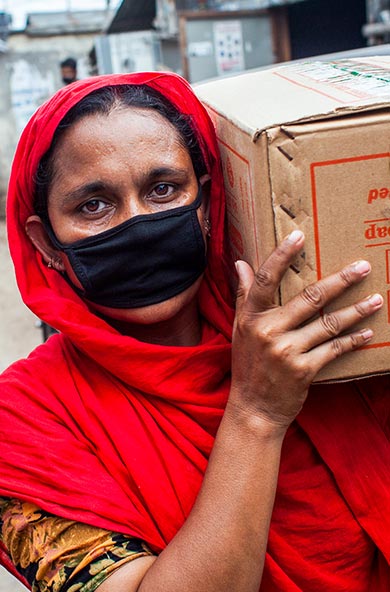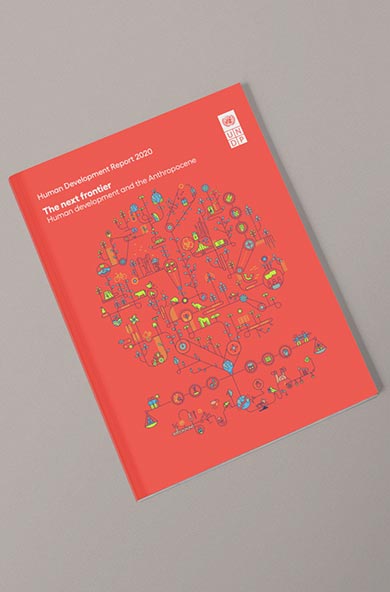Executive Summary: Achieving the Sustainable Development Goals in the Era of the Addis Ababa Action Agenda
Executive Summary: Achieving the Sustainable Development Goals in the Era of the Addis Ababa Action Agenda
October 26, 2016
Countries across the Asia-Pacific region have set high ambitions for progress across a wide-ranging, interconnected sustainable development agenda. Progress toward the MDGs was mixed, with major successes in areas such as poverty reduction but a large unfinished business in others such as infant and maternal mortality. The Sustainable Development Goals (SDGs) raise ambitions higher, calling for further progress across a wider range of issues. Demographic trends, where people of working age count for a higher proportion of the region’s population than ever before, offer both opportunities and challenges for achieving these targets. Critically there is greater recognition of the integrated, interconnected nature of these challenges and the opportunities and trade-offs that this agenda presents.
Many countries have access to a growing and increasingly diverse portfolio of financing that can contribute toward achieving results – though there are significant differences between countries. Rapid growth in domestic public and private finance in particular is driving increases in the resources available across the Asia-Pacific region. Yet the mix of resources varies widely, and each resource can make different contributions to sustainable development results. In North-East Asia domestic public finance has grown rapidly, driven largely by China. In South-East Asia domestic public finance plays a critical role, though revenues have plateaued and growth in domestic private finance is driving headline trends. In the Pacific international financing remains critical. The scale of financing also varies widely, with government revenues,[1] for example, equivalent to US$163 per person across Asia-Pacific LDCs in 2014, compared to US$2,167 per person in China.
Countries face a range of financing challenges, with some common and some differentiated issues across the region. Domestic public finance is a key driving force for sustainable development results across the region and revenues are growing fast in some countries, though have slowed in others. In absolute terms, revenues remain low for much of the region, at less than US$1,000 per person in half of all countries (compared to an average US$16,500 per person in advanced economies). Governments are also considering the sustainability and progressivity of their revenue models. And they are increasingly looking to systematically harness the potential of other financing. Rapid growth in private finance – an average 9% per year since 2000 – is driving increases in the scale and diversity of financing for a number of countries, though trends have been uneven across countries and others aim to accelerate nascent growth in private finance. Many low-income or least-developed countries face a transition away from concessional finance as they graduate these groups.
To address these challenges countries are developing more integrated, holistic financing frameworks for managing their approach toward making, mobilising and harnessing finance for sustainable development results. Governments across the region are strengthening the frameworks they have in place to mobilise and maximise the returns to financing, in order to achieve sustainable development results.
This report examines policies and institutions that countries use to link different sources of finance and national development priorities. The report seeks to understand the degree to which these policies and institutions add up to an Integrated National Financing Framework for achieving the SDGs. An integrated national financing framework can be understood to be a system of policies and institutional structures that can help governments to develop and deliver a strategic, holistic approach toward managing financing for nationally-owned sustainable development strategies. This concept, which was called for in the Addis Ababa Action Agenda, is explored for the first time in detail in this report. The report provides practical solutions for governments and adds to existing reports and global financing processes by providing a holistic country perspective across all financing types and the frameworks that countries have in place to mobilise them.
Principles of existing country financing frameworks
To develop more comprehensive and coordinated policy, financing frameworks in many countries are rooted at the top of government. To achieve coherent policymaking across government requires leadership at this level in order to bring actors across government together, build consensus and to give authority to the mechanisms designed to coordinate and align across interconnected policy areas. In Samoa, for example, leadership from the Ministry of the Prime Minister has been critical in establishing a whole-of-government approach to planning financing and monitoring implementation. In Indonesia a dedicated Cabinet-level ministry coordinates planning and policy for economic affairs.
Many countries have established a long-term vision for the results they want to realise, that provides a foundation for policymaking and the development of financing strategies. Long-term visions, typically articulated through a national development plan, provide overarching direction on the development path that countries want to follow and specify key results they aim to achieve. They are the platform on which medium-term operational strategies and financing policies are built. In recent years a number of countries have developed new long-term visions. Papua New Guinea established Vision 2050 in 2009 which, with a forty-year outlook is one of the most forward looking plans in the region. Countries such as Bangladesh, Indonesia and Mongolia, which recently launched its 2030 Sustainable Development Vision, have established plans with a 10-20 year time horizon. Others such as Lao PDR are in the process of establishing a long-term vision.
Countries are developing more holistic financing strategies that define the contributions that all resources can make. The need to mobilise contributions from a wide range of financing types is well recognised and many countries have developed holistic financing policies that specify the roles they want non-state actors, particularly the private sector, to play. Bangladesh aims for private financing to fund 78% of its 7th Five Year Plan (2015/16 – 2019/20). While countries have achieved successes with these policies, they are typically operational policies that cover a 3-5 year period at most. There is a gap between these and the longer-term vision documents. There is potential to build on these existing structures and develop strategic financing policies that establish long-term direction for the financing a country aims to mobilise, and determine what reforms are needed to get there.
A number of countries have established a results-oriented, cost-based approach for their financing strategies. Starting from estimates of the cost of the investments needed to achieve results can help countries to develop an ambitious financing strategy that looks at the interventions necessary to scale up resource mobilisation accordingly. This is in contrast to approaches which build solely on historic trends and develop a strategy based on the likely trajectory of existing flows. Lao PDR has established a process to estimate the financing needs of its five year National social and economic development plans. Clarity on the contributions it targets from the private sector, for example, has helped the country to implement policy changes designed to unleash much greater investment. Private investment has consecutively exceeded the targets outlined in Lao PDR’s five year plans.
Countries are undertaking reforms to enhance the alignment between financing policies and overarching plans. Each country’s overall approach to financing is designed and operationalised through a range of policies, involving a large number of actors across government – and an even larger group of stakeholders outside government. Ensuring that there is coherency – common understanding of direction, goals, roles and responsibilities – across the system is essential for overall efficiency and to ensure each actor within the system is effectively fulfilling their role. For many countries the overarching national development plan, with accompanying financing plan, is the foundation on which the system is built. The strength of mechanisms then which ensure that operational policies across the system are closely aligned to this foundation and are complementary rather than contradictory with each other, is a key determinant of overall efficiency.
In the Philippines, government budgets are scrutinised by Cabinet-level committees to ensure clear linkages between public spending and the objectives articulated in the medium-term vision document, the Philippine Development Plan. The strength of these mechanisms is reinforced by involvement at the highest level: the President is both the Chair of one of the scrutinising committees, and also the Chair of the National Economic and Development Authority, which manages the Philippine Development Plan.
Countries across the region recognise the need for corresponding mechanisms to coordinate private sector policy but, with just a few exceptions, have found this more difficult to achieve in practice. Government influence over private finance is less direct and exerted through the incentives and business environment created by a large number of government agencies, often across levels of national and subnational administration. Where countries have been successful, such as Cambodia’s promotion of rice exports, their efforts have often been characterised by narrowing the focus to specific interventions that have clear leadership from the top of government, clear targets and well defined implementation plan.
A number of countries are taking steps to strengthen their focus on results in planning, implementation and monitoring. Systematically managing all aspects of policy design and delivery for results can increase efficiency, though it takes time and iterative steps to build the systems and results-oriented culture necessary to achieve this in practice. The Philippines introduced results matrices to monitor progress against the 2011-2016 Philippine Development Plan. These results matrices emphasise the outcomes and impacts targeted in the Plan. They track progress in a hierarchical framework, linking the overall societal goal, ‘Poverty reduction in multiple dimensions and massive creation of quality employment’, with intermediate goals and outcomes in sectors and subsectors.
The importance – and efficiency gains – of systematic approaches toward accountability and dialogue are recognised by many countries. Dialogue is essential for building the trust and sense of shared ownership that is critical for successfully mobilising the contributions of private actors and other partners. Engaging partners from the policy development phase through implementation and review can help governments design and deliver more realistic, responsive policies. Accountability mechanisms are important in their own right, providing a voice and channels for stakeholders to engage – and they can also support more efficient policymaking. In India social accountability mechanisms play an important role in strengthening the efficiency of Union (central government) and state budgets, and in reducing losses from budgetary expenditure. Monitoring by NGOs has helped policymakers to understand the extent to which stated priorities are reflected in the implementation of polices, clarify optimal burden sharing between administrative levels and strengthen the case for investment in social sectors. Such mechanisms have also helped improve the implementation of key social policies, reducing losses and improving efficiency.
Building blocks of an integrated national financing framework model
Looking across the financing frameworks that countries have and are developing, a number of core principles emerge. Countries face a complex and rapidly changing financing landscape and are adapting the way they plan and deliver policy to leverage the opportunities, and address the challenges, this presents. Drawing on the evidence in this report about the core principles of countries’ existing financing systems and about the adaptations they are making, a number of principles or building blocks to an effective, integrated and holistic financing framework emerge:
· Leadership that facilitates institutional coherence
· A clear vision for results
· An overarching strategic financing policy
· Results-focused financing policies for specific flows
· System-wide monitoring and evaluation
· An enabling environment for accountability and dialogue
This report draws these principles together to build a conceptual model for an integrated national financing framework (Figure 1). The concept of an integrated national financing framework, that incorporates these building blocks, can help guide countries as they consider and undertake reforms. It can help senior leaders within governments across the Asia-Pacific region, and beyond, think about their financing frameworks holistically. It can prompt reflection on the strengths and weaknesses of existing frameworks as a whole, in relation to sustainable development strategies and the financing needed to realise them.
At the start of the SDG era, now is an important time for countries to examine their financing frameworks and consider working toward establishing an integrated national financing framework. To realise ambitions for results across an integrated sustainable development agenda, countries will need to be able to design and deliver strategic, holistic financing policies that mobilise and maximise the impacts of a wide range of financing. The frameworks governments have in place to manage these financing policies are a critical determinant of their success. The concept of an integrated national financing framework can help countries strengthen these frameworks and to identify reforms that can be made in the short run which can build over time toward stronger systems in the long run. This concept can be adapted to specific country contexts and circumstances, and countries may wish to undertake a development finance assessment to develop a roadmap for reform. Given the wealth of experience across the region, countries can also be a valuable source of knowledge to one another through regional knowledge sharing and exchange.
Countries wishing to establish an integrated national financing framework can learn from one another and may wish to establish an index to develop a roadmap and track their progress. While the financing frameworks across the region vary widely, they have many common features and challenges, and as such knowledge sharing between countries can be invaluable in helping a government to determine the path of reform that it will follow. Regional platforms have an important role to play in facilitating exchange, supporting countries as they undertake reform and building up an understanding of good practice. Countries may wish to undertake a Development Finance Assessment. They may also wish to compile indicators that capture the status of each building block, in order to define milestones in their roadmap toward an integrated national financing framework, and to monitor progress over time. Such an index could be at least partially built on information from existing monitoring processes and surveys such as the GPEDC monitoring framework, PEFA and CIPA assessments, open budget survey and others.
The role for development cooperation
With greater emphasis on nationally-led development strategies, countries and providers alike are reflecting on how development cooperation should evolve. Three particular roles for development cooperation stand out. Firstly, development cooperation will be most effective if it plays to its strengths relative to other types of financing within each country context. Development cooperation is a small resource, but it has unique characteristics that mean it can be used for investments which other resources cannot. Secondly, development cooperation can play an important role in leveraging other flows to contribute toward results – both leveraging increased volumes of financing, and leveraging development-additionality from this financing. Thirdly, there is increased priority on the role and responsibility of the international community to support institutional development so that countries are better able to drive their own development strategies. This encompasses both the provision of direct support for countries as they reform and develop institutions, and development cooperation providers operating themselves in a way that strengthens and does not undermine institutional development.

 Locations
Locations



















